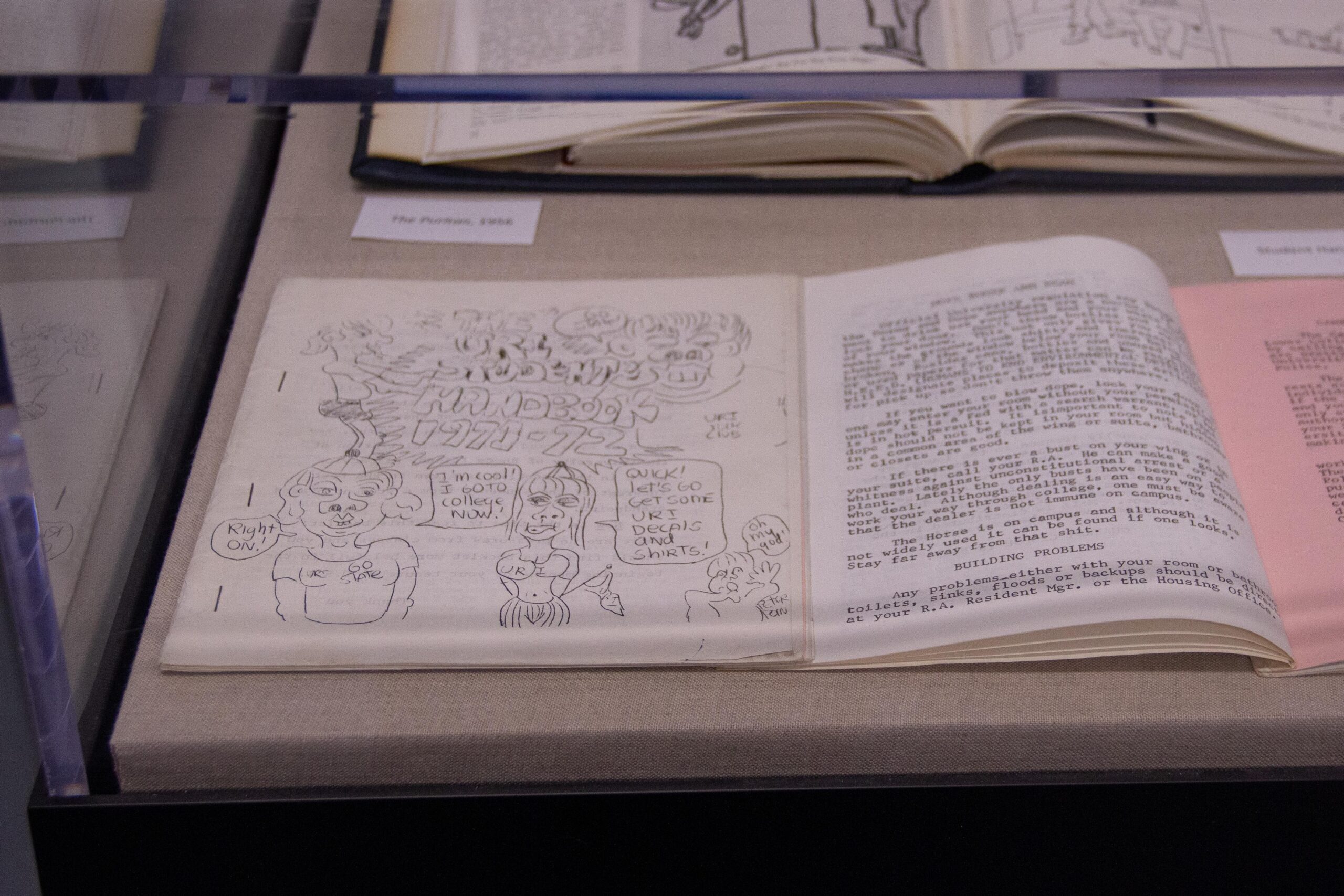While education in the digital age is often confined to a screen, students can see and touch historical books and local memorabilia in the University Archives and Special Collections Unit in Kingston, Rhode Island.
Located on the second floor of the Robert L. Carothers Library, in a room next to the stairs, historical documents, handwritten letters, enamel pins and 18th-century University of Rhode Island diplomas rest atop metal shelves. There, instead of reading about campus cows and free milk, students can see the old milk bottles for themselves.
From genealogy records to milk jugs, these tangible archives serve as a “collective memory” of local activities and achievements dating back to the early 1700s, according to Karen Morse, director of the University Archives and Special Collections Unit.
“We want to help people get the information they need, for whatever they need it for,” Morse said. “We’re open to everybody.”
While faculty publications and scanned photos are available online, this section of the library houses physical reminders of Washington County’s history. This allows community members to explore their family’s lineage, read old student newspapers and learn about URI’s roots.
The difference between handling objects and documents in their original form, as opposed to the digital copy, can be “substantial,” according to Morse.
“Interacting with a scrapbook physically is very different than looking at a series of images of scrapbook pages, even if they are presented in an application that displays them like a book,” Morse said.
The majority of requests for archives within the collections unit are from external sources, such as researchers in New England universities and members of St. Augustine’s Episcopal Church in Kingston, according to Morse.
“You might [wonder] why we have all these church collections and if they even get used,” Morse said. “They actually get used to quite a lot – it’s genealogy people are really interested in. And church records have that.”
The university archives are not limited to academic research, according to Morse. Records and manuscripts, including sets of first-year student conduct books called “the freshman Bible” from 1902, document how URI has changed.
“Before the sexual revolution, there were periods of time where [women] couldn’t eat in the dining room unless [they] were wearing a skirt, and no men were allowed in their dorms,” Morse said. “All the women had curfew, but the men didn’t have curfew. These rules seem kind of inconceivable today, but they are right here [in this book].”
While URI’s archives are routinely scanned by library staff, adding to the digital database, the allocation of physical material has not stopped. Morse files weekly copies of the student newspaper and receives various memorabilia from university events.
The online archives largely feature faculty publications, according to Julia Lovett, a digital initiatives librarian who maintains this area. Some faculty members have their scholarly research published officially, but for others, the library’s online repository is the simplest way to allow public access to their work.
“[The digital archives] are a good place to put material that’s not necessarily published anywhere else,” Lovett said.
The main benefits of uploading material online are discoverability and accessibility, especially as items age, according to Lovett. Over 95% of the website’s traction is due to visitors from Google, as opposed to the limited amount of in-person visits to the archives on campus.
“It’s part of our mission as a public university to benefit the general public through providing information,” Lovett said.
It is important to collect and save past objects and documents, but continuing to build the archives is additionally valuable, according to Morse. Despite technological advances at URI, most of the University Archives and Special Collections Unit has not been saved in a digital format.
As of Tuesday, URI’s Digital Commons has had 66,006 downloads this year, and the most recent download was from Berlin, Germany, according to the Digital Commons website .





